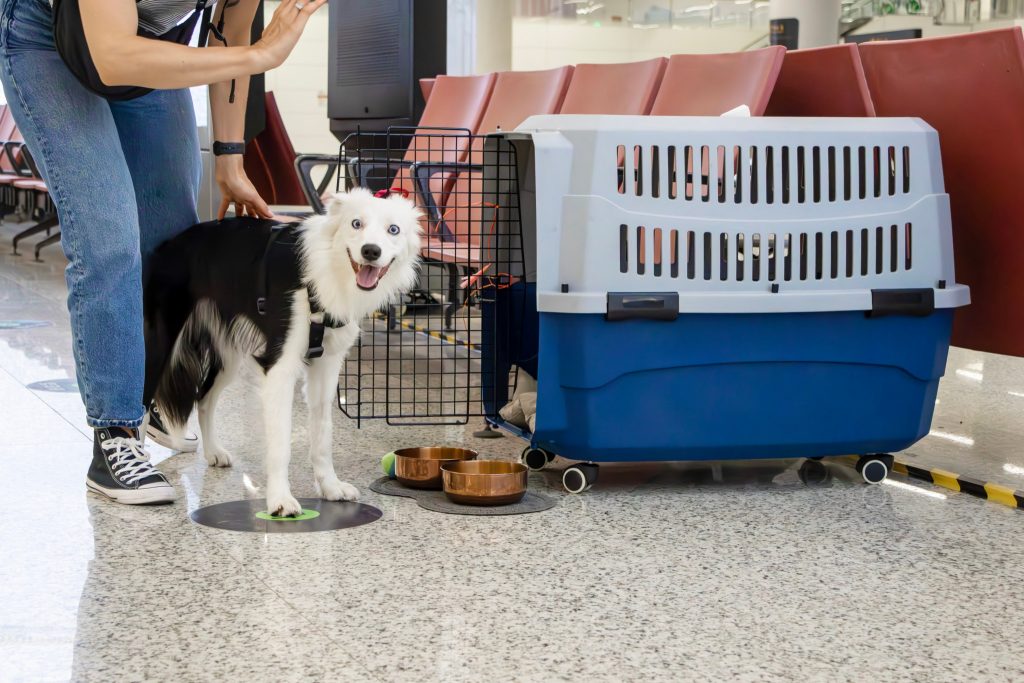
On August 1, 2024, the Centers for Disease Control and Prevention (CDC) implemented new guidelines for dogs being imported into the United States.1 The rules are broken down into three parts: dogs from rabies-free or low-risk countries within the last six months, dogs from high-risk countries within the last six months, and unvaccinated dogs from any high-risk country.
All dogs, regardless of country of origin, must adhere to the United States Department of Agriculture (USDA) requirements stating they must be at least six months of age at the time of travel and issued a health certificate from a licensed veterinarian, confirming the dog is healthy and free from infectious diseases.
Additional requirements are also in place in cases of commercial import or fee-based adoption, as well as specific rules for countries that have diseases, such as foot and mouth disease and screwworms.
The specifics
For the easiest and least complicated import of dogs from low-risk or rabies-free countries, dogs must be at least six months of age, appear healthy, and have a universal microchip. There is an online CDC Certification of U.S.-Issued Rabies Vaccination or Dog Import form to be completed by the person transporting the dog into the U.S. and is valid for six months.
For dogs being imported from high-risk countries, the above must be complied with and the CDC Dog Import form must also be completed, as well as a Certification of Foreign Rabies Vaccination and microchip form if the dog is vaccinated outside the U.S.
This form is filled out by any licensed veterinarian and endorsed by an official government veterinarian. If not included on the form above, the transported will also need a valid rabies serology titer report from a CDC-approved laboratory.
If the dog is vaccinated by a U.S. veterinarian and has a valid U.S. rabies vaccination certificate, the following are required: A Certification of U.S.-issued Rabies Vaccination form or a USDA-endorsed export health certificate. These forms are filled out by a USDA-accredited veterinarian and endorsed by the USDA. Lastly, dogs must have a reservation at a CDC-registered animal care facility, and if the rabies titer is not valid, then the animal must be quarantined for 28 days.
All dogs can only enter the U.S. at an airport with a CDC-registered animal care facility. This includes 18 major airports located in Anchorage (ANC), Atlanta (ATL), Boston (BOS), Chicago (ORD), Dallas (DFW), Detroit (DTW), Honolulu (HNL), Houston (IAH), Los Angeles (LAX), Miami (MIA), Minneapolis (MSP), New York (JFK), Newark (EWR), Philadelphia (PHL), San Francisco (SFO), San Juan (SJU), Seattle (SEA), and Washington DC (IAD).
Any dog not vaccinated for rabies and located in a high-risk country at any time in the past six months, will not be allowed to enter the U.S.
Community feedback
While the change in requirements is aimed to prevent the spread of rabies and other infectious diseases, as well as better protect both humans and animals, the age minimum requirement is causing controversy.
Six months is a crucial age for dogs, and experts agree behavior is usually determined by that age.2 Not being able to purchase or adopt a dog during that vital behavioral timeline can significantly impact the behavior of that animal and its bonding opportunities with human/s.
Additionally, the stress of travel at that age can cause harm and stress to the dog.

Vet Tech Nation, a Facebook group of more than 47,000 members, posed a question about the potential impacts of the new guidelines to clinics, their clients, and personally.
Shelby Helmerich, LVT, said, “I will likely not import another dog due to the new CDC requirements—being the dog has to be at least six months old now. I prefer to get my puppies younger due to that socialization window. I’m also leery of the dog being six months old at age of importation since they are in that fear period. A bad experience could really cause some long-term issues.”
Kathrine Polzin, CVT, responded, “The original requirement of a USDA-endorsed rabies certificate before leaving the U.S. would have been incredibly crippling to travelers. [We] had one family who had to cancel their trip because of the delay between the latest rabies booster and when the application could be submitted. The newest change of only needing the CDC form coming back is much less restrictive, but without a huge national public announcement, many people who have been going to Mexico on a regular basis every winter are going to be unprepared and very unhappy when they get to the border, not knowing anything has changed. I think this is the least effective way for the CDC to irradicate canine rabies. Dogs coming into the U.S. are not the ones spreading rabies.”
Kimberly Joy Giese Wilson, LVT, also chimed in, saying, “I was sending a pup to Sweden this year, and getting one back next year. With the new rules, unless I know someone very well and know their training philosophy, there’s NO WAY I’m waiting until my puppy is six months old to get it. Some very formative stages will have presented themselves and the lack of starting my service dogs at six months is ridiculous. I start my pups at birth and two to four months off training sets a pup way back. What I think is ironic is 12 weeks was earlier enough for a rabies vaccine before this new law went into effect. I’d send under 12 weeks, if it worked for the new owners. The most difficult part will be for vets to get those forms turned around quickly enough for clients to travel. I don’t know many clinics that have that time.”
Best practices for clinics and their clients dealing with the practicality of importing a dog into the U.S. include:
- Advanced planning. Ensure all vaccinations, health checks, and documentation are completed well in advance of the planned importation date to avoid delays.
- Work closely with veterinarians familiar with international travel requirements to ensure all health and vaccination protocols are met.
- Regularly check for updates to the CDC guidelines, as regulations may change based on emerging health threats or policy adjustments.
- Check individual airline requirements as those can also have additional paperwork.
- Prepare the animal for travel by enforcing positive crate training.
Conclusion
The CDC’s updated 2024 guidelines for importing dogs into the U.S. reflect a continued commitment to safeguarding public health and preventing the spread of diseases. By adhering to these updated requirements, importers and owners can contribute to a safer and more efficient process for welcoming dogs into the country. To minimize the stress for both dog and human, being familiar with the guidelines and doing research can help better prepare all for the journey ahead.
Jennifer Serling, CVT, RVT, VTES, FVTE, BVSc, MVEd, is a credentialed technician with more than 30 years of experience in the profession. Serling has a vast array of experience in both large and small animal medicine, as well as academia. She is currently the interim director at Appalachian State University Veterinary Technology Program and serves on multiple boards and committees working to enhance the veterinary profession.
References
- “Bringing a Dog into the U.S.” Importation, 2024, www.cdc.gov/importation/dogs/index.html
- Age and behavior. (2019, May 10). https://www.aaha.org/resources. https://www.aaha.org/resources/2015-aaha-canine-and-feline-behavior-management-guidelines/age-and-behavior/
- “How to Bring Dogs into the United States for Commercial Sale or Adoption.” gov, 2024, www.aphis.usda.gov/live-animal-import/commercial-dog-import.
